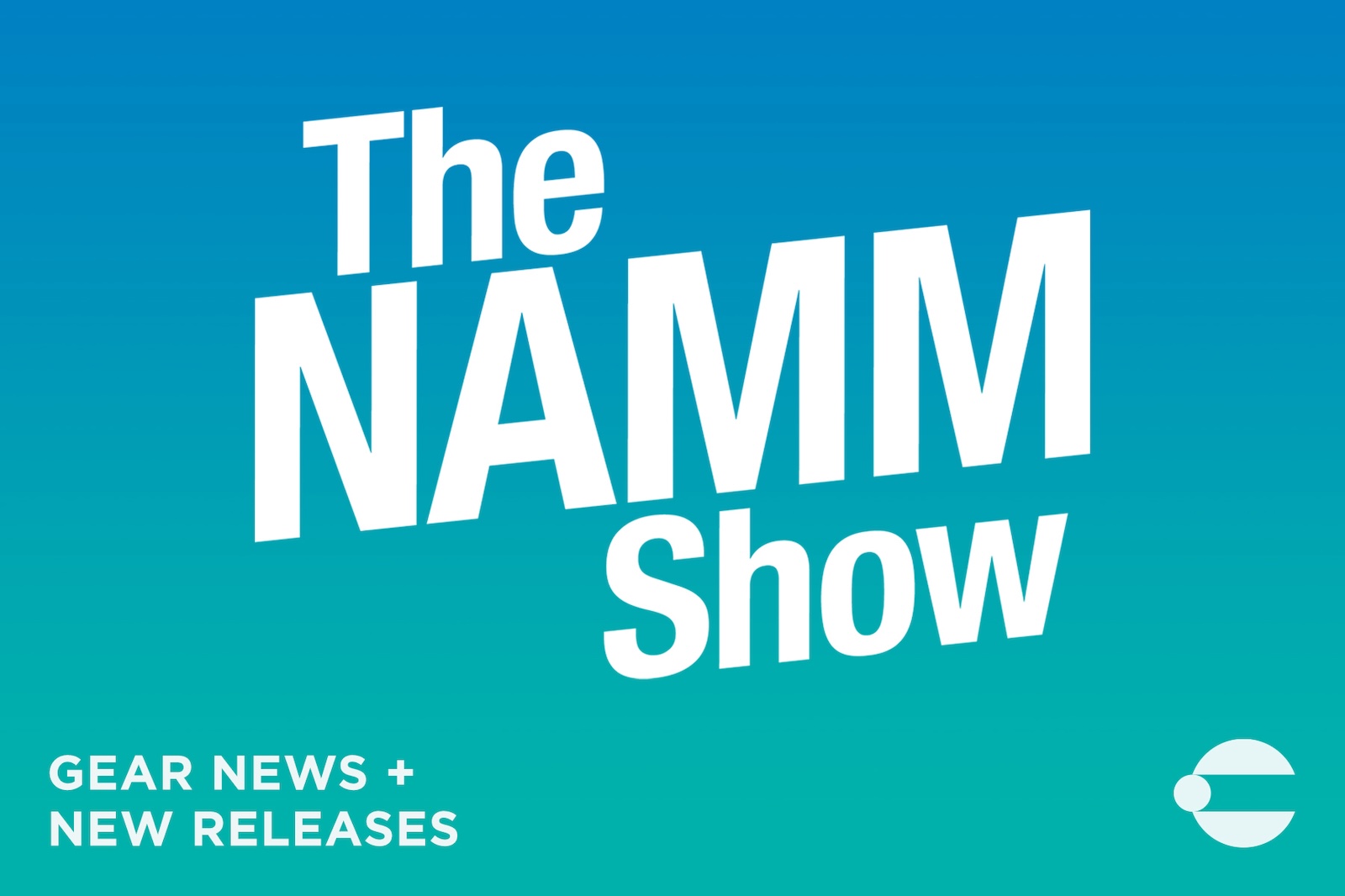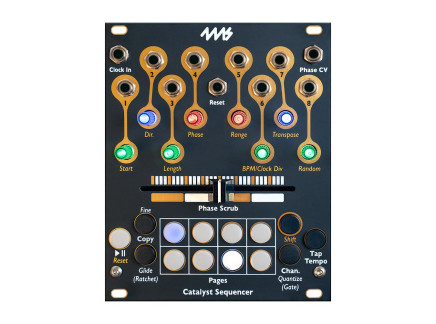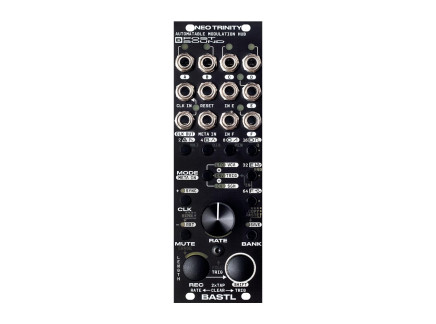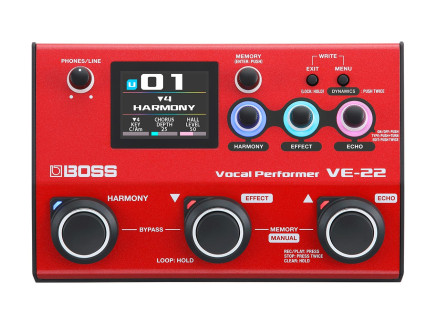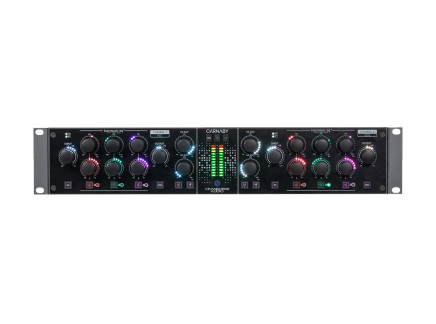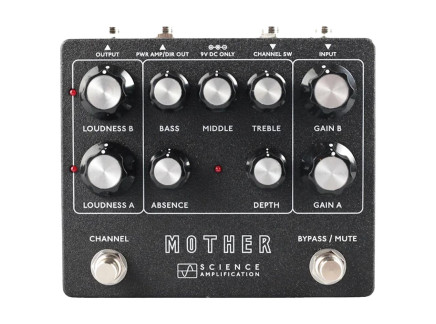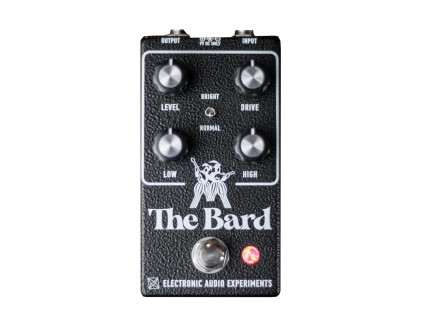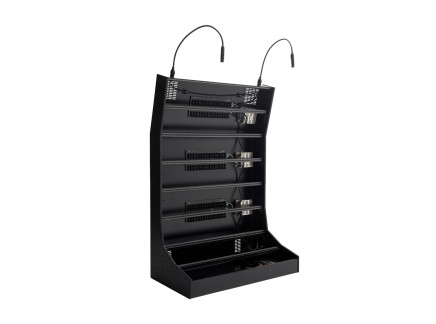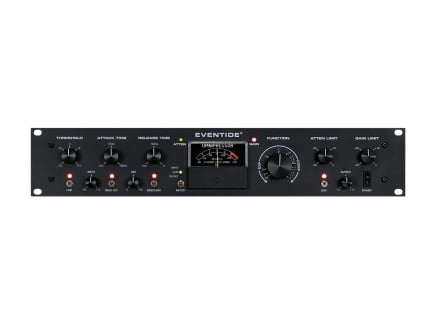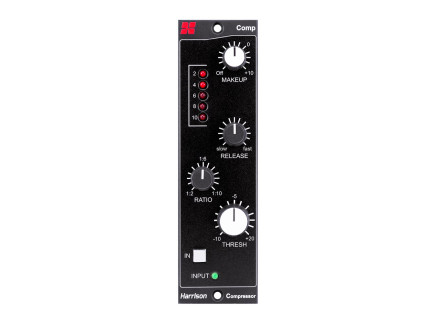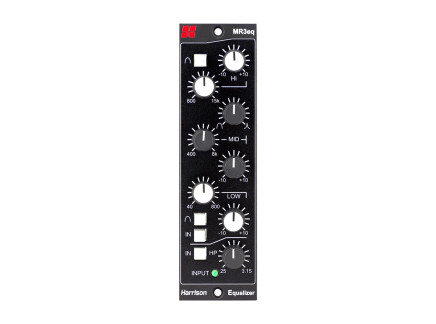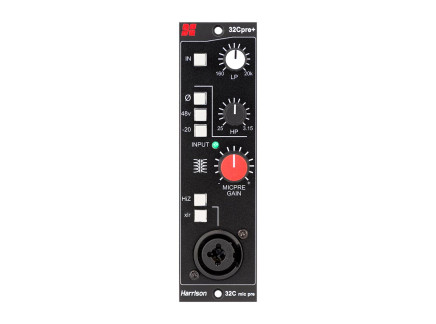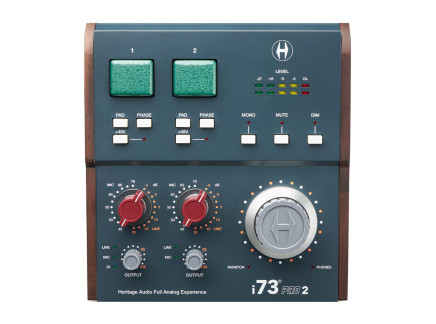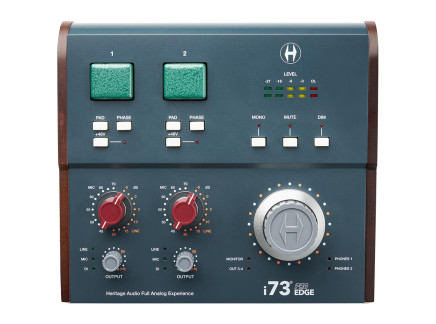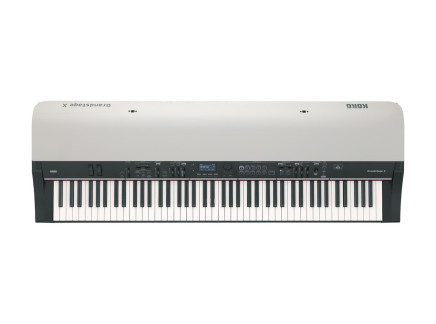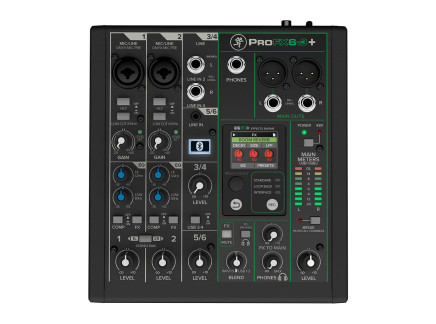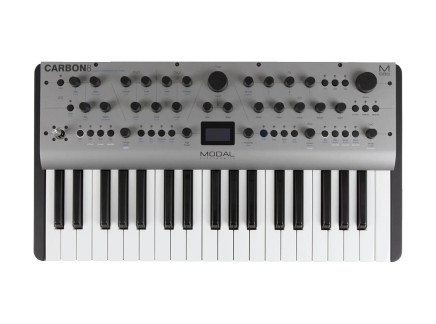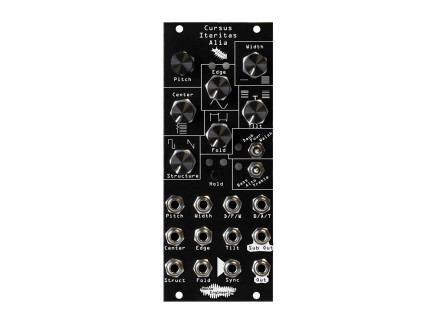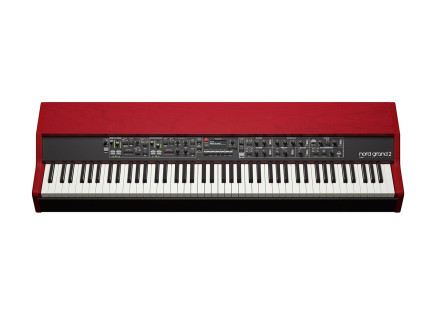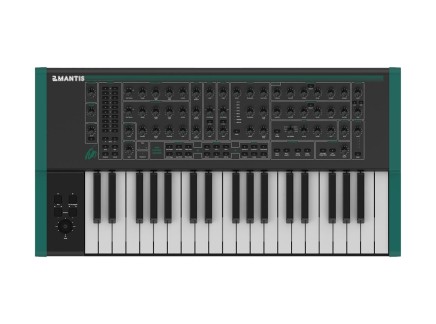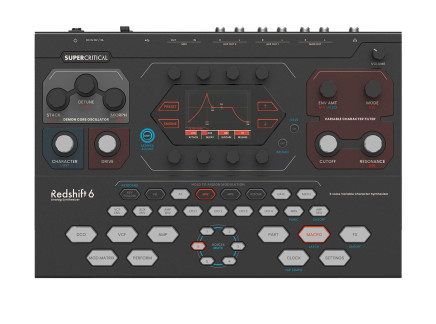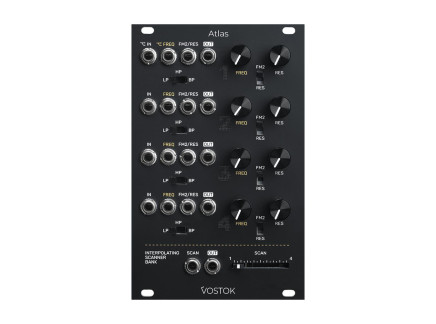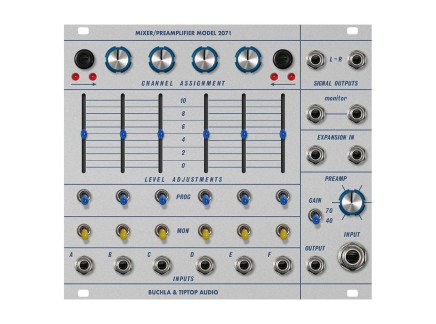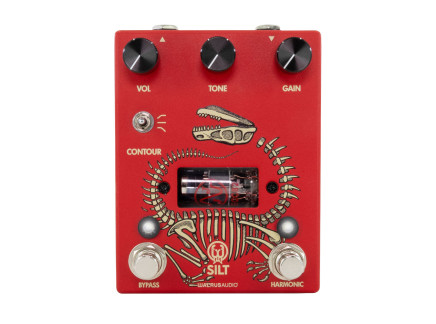NAMM returns! And this year, it's reclaiming the ancestral January 25–28 time slot. It’s the time of year when music gear manufacturers and enthusiasts the world over converge in bright and sunny Anaheim, California to get the scoop on some of the year’s biggest releases. And while NAMM is a convention for the musical instrument/equipment retail business as a whole, it’s an exciting time specifically for those interested in synthesizers, drum machines, effects, studio gear, and other electronic music delights. And, this year, we were also graced with the coincident Buchla & Friends gathering in downtown Los Angeles—where many smaller and boutique synth manufacturers gathered out of NAMM's walls to share their newest developments.
We’re always eager for the latest product developments, so we closely track NAMM releases and announcements. In this article, we cover the details of the new products announced at NAMM as well as in the weeks leading up to NAMM. We’ll be updating this page as more news comes in, so set a bookmark and check back for the latest info.
4MS Catalyst Controller + Catalyst Sequencer
Smaller makers come and go in the Eurorack world, but sometimes great ideas get a new lease on life. A few years ago, Emblematic Systems made a splash with their Catalyst module, a crossfader-based CV controller module bringing Elektron Octatrack-style Scene functionality to Eurorack systems. However, for various reasons, Emblematic Systems ceased production of their modules but licensed the Catalyst design to 4ms for future development. We've been eagerly awaiting the 4ms spin on the concept, and they're finally revealing two new Catalyst modules at NAMM 2024.
Most similar to the original, Catalyst Controller is a revised take on the crossfader-style macro controller. Notably, the module features eight channels of incredibly precise control voltages—down to sub-millivolt accuracy—and wide ranges from -5V to +10V, though these can be scaled down to a variety of different levels. Like the original, snapshots of the eight channels can be assigned to various Scenes, which are then arranged into Pathways along the length of the fader. You then get the flexibility to assign optional crossfade curves between scenes, and record up to 20 seconds of movement on the fader or an external CV source for complex LFO generation and control.
Coming in hot with a fresh take on sequencing, the Catalyst Sequencer offers some unique perspectives thanks to its fader interface. Based on the same hardware as the Catalyst Controller, each channel now corresponds to its own sequencer with independent settings for parameters like step length, scale quantization, and more. But here's the twist: not only can you use Catalyst Sequencer like a good old-fashioned step sequencer (a powerful one, at that), but you can use the fader or an external control voltage to scrub through the sequences. This gives you advanced control over the selection of stages, and the use of complex LFOs can create all kinds of sequences with custom contours.
Can't decide between one or the other? Don't worry—both ship with a double-sided panel and the ability to swap modes with a special button combination. So if you find yourself preferring one mode over the other, or frequently need to reconfigure your rig for different recording or performance purposes, you can easily change between the modules as needed.
Both Catalyst modules are expected to be available in March.

4ms also showed off an updated prototype of their upcoming Meta Module (pictured above) on Saturday's Buchla & Friends event in downtown Los Angeles. Previously shown at Knobcon 2023, the Meta Module is a digital host platform for VCV Rack patches, allowing you to embed a whole virtual modular synthesizer within your physical modular system. We're looking forward to hearing more about this module as 4ms prepares for its release in 2024.
ADDAC ADDAC508 Swell Physics
Though not physically present at NAMM this year, ADDAC System has introduced yet another in their long line of innovative modulation sources: the ADDAC508 Swell Physics. As with their famous ADDAC503 Marble Physics, the Swell Physics module takes its inspiration from modeling a physical system. This time, though, rather than rolling marbles around on a hypothetical surface, we imagine four buoys on the surface of the ocean—each displaced from one another by a variable distance.
As the waves crash by in various states of turbulence, the vertical displacement of each buoy becomes an interesting source of related-yet-different movement. Using a Gerstner Wave model as the means of simulating a two-dimensional wave surface, this module draws influence from the same techniques used to generate fluid surfaces in computer animation. In addition to the four outputs related to each buoy's absolute vertical displacement, you get gate outputs based on comparisons of adjacent CV outputs, as well as an output of the instantaneous average of all buoy positions. You also get variable controls and CV inputs for Swell Size, Agitation, Spread, and Sim. Speed—allowing for macro control of the various CV outputs.
If you want a novel new modulation source for imparting organic changes to various aspects of your patch, Swell Physics is a fun and quite lovely option. Whether you're making purely generative music or just need to breathe new, organic life into your patches, it's well worth a look.
ALM Busy Circuits Mega Milton
The ALM Busy Circuits Mega Milton offers a slew (pun intended) of voltage processing utilities packed into a single 8hp module. This compact utility module is an absolute smorgasbord of important CV utilities that every system needs—all combined in an unexpectedly clever way that facilitates many common patching idioms.
So, what's in a Mega Milton? Mega Milton includes a stereo 3.5mm line to dual mono Eurorack level signal converter, great for bringing in signals from your external synths, drum machines, audio interface, computer, and more. It also offers a three-input, one-output unity mixer, a simple attenuator, a gated slew limiter with variable slew time, a sample and hold, a noise source, and a one-to-three buffered multiple with LED-based signal polarity indication.
That's a bit of a mouthful, and it's a lot to pack into a single module, but the layout and particular combination of features allows for easy implementation of typical patching tricks. When its output is left unpatched, for instance, the attenuator acts as a fourth channel for the unity mixer, with its own dedicated level control. The slew limiter's "enable" input can be used to selectively apply glide to specific notes in a sequence; the white noise is normalled to the sample & hold CV input for easy access to triggered random voltages, and the S&H output is normalled into the slew limiter for creation of smooth random voltages. By combining different portions of the module in different ways, you can expediently create tons of interesting utility patches...many of which would include several modules and lots of cables to achieve otherwise.
It's hard to imagine a Eurorack system that wouldn't benefit from the features that Mega Milton offers. Happily, it's available for order now.
API TCS-II Channel Strip
Revered for their legendary analog consoles at the heart of famous studios, API has also done stellar work in making their iconic circuits available in various packages. After all, they invented the 500 Series format that spurred a revolution in building out recording studios, while also providing several offerings in 19" rackmount format. But if you're seeking out authentic API console vibes, nothing in their product line has topped the curated collection of circuits found in The Channel Strip. And now for NAMM 2024, TCS-II refines the concept further to deliver the best singular package of API sound yet.
Filled with everything you need to shape your signals before they hit your DAW or recorder, the TCS-II is something of an API greatest hits collection. Starting with a 512c preamp, you get plenty of gain and the ability to work with microphones, line-level sources, or instrument-level signals. From there, you're able to shape dynamics with the 527A compressor and 550A EQ, the order of which is switchable. The 527A is a full-featured compressor, and the powerful Thrust circuit delivers some serious punch when engaged. Meanwhile, the 550A is a versatile 3-band EQ with +/- 12dB of boost or cut for various frequencies and some handy filtering options to boot.
TCS-II also features the 325 line driver circuit at the output, offering some end-of-chain gain boosting and monitoring via the LED display. Of course, standard API design features like detented controls, bypass switches for all sections, and full rear panel patchability make the TCS-II a worthwhile addition to a studio.
API's TCS-II is available for preorder now!
Bastl Instruments Neo Trinity
Pushing Matrix puns to the max, Bastl Instruments has introduced their latest Eurorack module: the Neo Trinity. This multi-channel modulation source can fill any number of roles: it could just be a way of adding some extra LFOs, or it could become the modulation brain of your entire system. With six independent outputs in a mere 8hp of space, it's a downright modulation powerhouse—but happily, it is still intuitive and fun to use.
Each of Neo Trinity's six channels may be independently set to act as an LFO, envelope, or CV recorder—with many options for customizing the behavior of each individual mode. LFO mode gives you a variety of standard modulation shapes, including sine, triangle, ramps, pulses, stepped and smooth randomness, and the option for tempo-based modulation rate definition or continuous frequency control. You can even "motion record" the LFO rate knob for evolving modulation. The envelope mode allows you to record envelope trigger patterns, and to define the shape and duration of the envelope curve. The CV recorder mode allows you to record gate or motion patterns, including the option for quantization—making it a great source of impromptu sequences.
The CV inputs have different modes as well, allowing for automation of the rate knob, the amplitude of specific channels—the possibilities are nearly limitless, especially once you start using individual channels to control one another. Half performance controller and half modulation source, the Neo Trinity has tons of other tricks up its sleeve, including a Meta Mode that allows you to macro control different behaviors of each channel on a global basis. It presents new opportunities for squeezing a ton of performative potential out of even the most compact of systems—and we're absolutely stoked to dive in and see how it'll work in our own systems.
Neo Trinity is available to order now!
Boss VE-22 Vocal Performer
The stompbox standard bearers at Boss have introduced a new addition to their line of comprehensive multi-effects for vocalists, the VE-22 Vocal Performer. An update to their VE-20 vocal effects processor and looper, the VE-22 boasts a ton of new sounds and connectivity options ready to enhance your live vocal performances with expressive effects and stunning sound quality. While not quite as expansive as their top-of-the-line VE-500, the VE-22 offers vocalists much of the same functionality as its bigger sibling at a more affordable price with streamlined operation.
Boss has included 39 powerful effects in the VE-22, from classic essentials like compression, EQ, and reverb, to more experimental effects like lo-fi, radio, and ring mod. Introduce studio-processing techniques like pitch correction, double/triple tracking, and a powerful harmonizer into your live set-up to deliver impactful performances that sound polished and expressive. The VE-22’s onboard looper with 37 second phrase length lets you audition effect ideas, create backing textures, or build complex overdubbed arrangements with only your voice as a sound source. With 99 user memory slots, you can easily recall settings between songs on stage, giving you ultimate control over the VE-22’s flexible effects engine.
The VE-22 features significantly upgraded connectivity, allowing you to implement the unit in a variety of set-up configurations. An XLR mic input with phantom power gives you access to condenser microphones, while two XLR outputs offer options for sending out stereo, dual-mono, or even dry and wet signals simultaneously. Audio recording and playback is available over USB-C, and a 3.5mm auxiliary input lets you easily pipe in backing tracks to sing along to. The VE-22 has been upgraded with a brilliant LCD color display and intuitive customizable switches for easily navigating this expansive effects unit. If you’re looking for an all-in-one solution for live vocal processing, the VE-22 Vocal Performer offers a fantastic option for achieving powerful vocal effects in a streamlined and intuitive interface.
Buchla 200 Series Reissues & Updates
It should be no surprise that at the NAMM-adjacent event Buchla & Friends, we caught wind of some exciting developments in the Buchla universe. Buchla USA has been working non-stop to bring knowledgeable minds and capable hands into the fold to make Don Buchla's instrument concepts more widespread than ever before. In addition to the upcoming release of the new Music Easel (in Retro and Modern editions) and the ongoing 200t series of Eurorack modules with Tiptop Audio, 2023 saw the first handful of 200 series reissues in the original 4U format—designed in collaboration with Roman Filippov of Black Corporation.
Now, an official, and extensive collaboration with Fillipov has been announced, drawing from his long history of designing and releasing DIY versions of classic Buchla 200 series modules. The existing 4U lineup, including classics like the Model 258 Dual Oscillator and Model 292 Quad Lopass Gate, remains intact alongside new reissues of other legendary designs and deep cuts from the Buchla 200 series catalog. If DIY isn't in your wheelhouse, don't worry—these modules are sold pre-built, with a full warranty.

As for newly available modules, some of the most sought-after Buchla designs are finally seeing renewed production, adapted in order to meet requirements for mass production (and to meet modern expectations for pitch tracking, etc). Certain modules like the Model 277 and Model 288 Time Domain Processor are so rare that few were ever produced by Buchla himself, and their current existence and fame grew out of work from Roman in the DIY scene. These modules, alongside others like the Model 259 Programmable Waveform Generator and Model 248 Multiple Arbitrary Function Generator (MARF for short) are now primed to see wider release than ever before, and we're sure that many folks building Buchla-inspired modular systems are eager to get their hands on these.
Availability for select Buchla 200 Series reissues is imminent, with more modules to become available later this year.
Alongside the production of 200 Series reissues, Buchla USA has officially partnered with the M.E.M.S. Project. If you haven't followed the M.E.M.S. Project—they have acted for the past few years as researchers, analyzing the Buchla instruments installed at select universities and colleges. Many of these systems included unique pieces built by Don Buchla, with numerous one-of-a-kind modules or curious anomalies that varied from otherwise identical modules in other systems; the MEMS Project meticulously traces these by hand to analyze and reverse engineer the designs. Now, their research has resulted in a material partnership with Buchla USA—soon, you'll be able to purchase Buchla USA-sanctioned kits for clones of many of Buchla's original 100 and 200 series designs.
At the Buchla and Friends event, MEMS & Associates were present to demonstrate a selection of their recreated modules. The MEMS modules cover a range of designs across both the original 100 Series and the later 200 Series, spotlighting particularly rare or unique modules. These include the Model 132 Waveform Synthesizer module, of which only one ever existed at Mills College, the odd pin matrix-based Model 242 Programmable Pulser, and the fun Nixie tube-based Model 150 Frequency Counter. MEMS & Associates PCB and panel kits are expected to be released later this year.
CHOMPI Club CHOMPI Sampler
If you've followed up-and-coming electronic music devices recently, there's a good chance you will have heard about the CHOMPI Sampler. After all, CHOMPI Club ran a highly successful Kickstarter campaign for their debut instrument, amassing over a million dollars from 2000+ backers. And now that they're wrapping up their Kickstarter obligations, CHOMPI Sampler is seeing a wider release, and we're excited to be adding it to our product catalog.
But what is CHOMPI? Part sampler, part effects processor, and part experimental looper, CHOMPI Sampler is a tactile and immediate platform for composing and performing your musical ideas. There's no screen or menus to get lost in—just a handful of buttons, encoders, and an array of Cherry MX switches to easily handle musical tasks. CHOMPI offers an intentionally minimal sampling engine and interface to keep things straightforward and allow creative juices to flow. And whether you'd prefer to use it as a polyphonic sampler, an array of one-shot samples, or just a delightfully quirky live looper for your other instruments, CHOMPI is simply fun and easy to use.
A big part of CHOMPI's charm comes not only in its simplicity but also in the cute aesthetic and portability of the device. You can easily swap the switch caps and faceplate to match your vibes, and the internal battery allows you to bring CHOMPI anywhere you go, so you can always have it ready when inspiration strikes. And of course, it easily connects with the other instruments in your collection.
We're accepting preorders for CHOMPI Sampler now, with the first batch expected to arrive and ship by late February.
Cranborne Carnaby HE2 Harmonic EQ
Cranborne Audio has announced the next evolution of their innovative Carnaby 500-series Harmonic EQ, bringing two of the highly musical parametric EQ/saturation circuits into the 19” rack world with the Carnaby HE2 Harmonic EQ. The original Carnaby is one of those audio tools that does a very familiar task in a radically idiosyncratic way with stunningly successful results. Its three bands of harmonic saturation add spectral richness in ways perfectly tuned for each frequency range. While the unit is capable of being operated much like a traditional parametric EQ, the ability to both add and cut harmonic content with saturation provides a response that sounds effortlessly musical and clear.
The HE2 provides two of these interesting tone-shapers in a convenient rackmountable package, perfect for stereo, dual mono, or mid-side processing. 20dB of gain is available at each input and output stage, allowing you to dynamically drive the circuit at different amplitudes to achieve subtle to extreme saturation effects. The three band architecture provides a simple interface for opening up top-end air and breath, emphasizing the punch of mid frequency information, or boosting low frequencies for a warm and centered low-end. Additional high and low cut filters provide further options for shaping your tone.
A fantastic all-in-one tool for mid side processing, the HE2 takes care of mid/side encoding and decoding so you can tend your stereo field with ease. Its back panel is equipped with TRS inserts for each channel, perfect for adding in-line effects and other sound processors. These inserts are post mid/side encoding and pre mid/side decoding, giving you an even more flexible palette for adjusting stereo information. Rounding out the suite of user-friendly features are a handful of convenient control options over USB and ethernet, as well as preset saving via the Control plugin, so you can easily take advantage of the HE2’s powerful processing without leaving your desk.
With the innovative and lush sound of the original Carnaby now available in a two-channel rackmount format with a ton of extra tricks up its sleeve, the HE2 is sure to turn pro-audio heads as a stand-out wonder of spectra-sculpting power.
Dubreq Stylophone Theremin + CPM DS-2
2024 is shaping up to be a year of fun and quirky musical gadgets, and if anyone is here at NAMM to prove this is true, it's the folks at Dubreq. If you're not familiar with their company name, you might know their most famous product: the Stylophone, a handheld synthesizer played with a stylus on a touchpad. With a history dating back to 1968, Stylophone earned its place in music history when David Bowie featured the instrument on his hit song "Space Oddity." And now over 50 years later, Dubreq has some intriguing new products on display at NAMM 2024.
The new Stylophone Theremin distills the fluid pitch system of a theremin into a more straightforward instrument. Unlike the traditional theremin design, which uses two antennae to control pitch and amplitude, Stylophone Thermin features just one antenna for pitch control. You can manually trigger notes or engage drone mode for continuous sound, and the inclusion of a second oscillator controlled by a pitch slider offers more precise control vaguely reminiscent of instruments like the Ondes Martinot. And just like other Stylophones, this instrument is highly portable and battery-powered, and mounting it on a microphone stand gives you an authentic theremin experience.
Perhaps the more surprising reveal, the CPM DS-2 is a full-fledged modular synthesizer in a compact Stylophone-style package. Boasting dual analog oscillators and filters, CPM DS-2 offers some of the richest sounds in the Stylophone catalog. Add in the twelve patch points, onboard digital effects, and capable Ultra LFO, you might be pleasantly surprised by how powerful this compact modular synthesizer can be. In addition to tried-and-true Stylophone features like the built-in speaker and battery-powered operation, you can also use a dedicated power supply for the CPM DS-2 or remove the panel and mount it in your Eurorack modular case.
We're awaiting more information on both of these new Stylophone offerings, but availability is expected later in 2024.
EAE THE BARD + Science Mother Preamp
Electronic Audio Experiments have started to take off in popularity in recent years, but their impeccably crafted pedals have long been the tone tools of choice for discerning distortion aficionados in the know. To kick off 2024, EAE has not only introduced a new pedal of their own, but they've also teamed up with the cool cats at Science Amplification to consolidate the massive sound of their amps into a highly versatile preamp pedal.
Launched back at the beginning of January, the Mother Preamp pedal captures the magic of Science's two-channel tube amplifier of the same name. Though it uses FET transistors rather than tubes, Mother Preamp has been tailored to deliver tube-like characteristics across its wide range of sounds, which includes everything from chiming cleans to near-fuzz levels of gain. The pedal even offers switchable channels, just like the real amp, to toggle back and forth between two levels of gain. Naturally, Channel B offers more gain for leads and heavy rhythms, but both are inherently flexible designs that may be used however you see best.
One of the more unique features of the Mother Preamp pedal is its dual outputs, distinctly voiced for different applications. The standard output keeps the pedal suited for stacking with other distortion and drive pedals, treating Mother Preamp less as the core of your tone and more as another flavor of gain for your pedalboard. But with the Power Amp/Direct Output, the full frequency response of the pedal is maintained—use this output with a power amp and speaker cabinet for an authentic Science amp on a budget, or pair it with your favorite IR loader or cabinet simulator in your DAW for great, record-worthy tones at low volumes.
Keeping up with the "amp in a box" theme, EAE has just unveiled their own new pedal: The Bard. This pedal is based on the classic Music Man HD130, a unique amp designed by Leo Fender after his company was acquired by CBS. Contrasting with Fender's earlier, all-tube amps like the Twin Reverb, the HD130 featured a solid-state preamp paired with a tube power amp, resulting in a gain and tonal profile existing in its own sonic space.
The Bard perfectly encapsulates the essence of the HD130 in a compact pedal, without the massive size of the amp or its ear-shredding volume. Starting with the cleanest of cleans, The Bard traverses through sparkly mid-gain to a somewhat bizarre overdriven sound that doesn't sound like tubes at all but authentically matches the characteristics of the original amp that has seated it as a cult favorite. There's even a Bright/Normal switch like the HD130, giving you more variety in the tones that can be crafted with The Bard.
Both the Science Mother Preamp and EAE The Bard are available for preorder now!
EarthQuaker The Wave Transformer
In a surprise move, EarthQuaker Devices has brought out a new piece of gear—and it isn't an effect pedal. Following the course established with 2020's Afterneath module, their latest device is an addition to the popular Eurorack modular synthesis ecosystem. The Wave Transformer is a 100% analog oscillator and waveshaper designed to cover all the tone-generating ground you could need, from simple tones to evolving drones, chaotic noise, heavily-modulated skronks, and everything in between. Best of all, it does this at a downright incredible price—only $199 as of its introduction.
The Wave Transformer is designed to, among other things, cover all of the ground you'd expect from a typical analog oscillator—and to do so completely. That means that all of the typical analog oscillator features and tricks are represented: you get linear and exponential FM, hard and soft sync, pulse width modulation, and a host of standard wave shape outputs (sine, triangle, saw, pulse, and two suboscillator outputs). What's more, it places precise tuning as a front-and-center consideration. It offers over eight octaves of reliable pitch tracking (!!), and offers coarse, fine, and micro tuning parameters for dialing in exactly the pitch you want. Moreover, you get a micro-tune CV input—great for subtle chorusing, dynamic pitch bends, controllable warble, and much more.
But, that's not all—perhaps the star of the show is the novel Transform control and Complex output, which employ an all-new, EarthQuaker-specific dynamic waveshaper designed to put continuous timbre control at your fingertips (and, um, and your...patch cable tips?). This isn't a wave folder, but has similar effect: by default, it processes the internal triangle wave and, as Transform is increased, adds additional harmonic content and, eventually, sub-harmonic content. With Complex Source set to Mute, you can also use Transform to gradually alter the amplitude and timbre of the sound, producing sounds akin to the results of a low pass gate...just weirder.
The Wave Transformer features a Shape Insert jack, allowing you to bypass the normalled connection from the internal triangle wave to the waveshaper in favor of other shapes. An obvious use case involves patching other outputs from the oscillator into the Shape Insert for further processing...but of course, you could plug anything into this jack, be it a sampler, external instrument or (gasp!) the output of the waveshaping process itself (feedback city). The suboctave generators can also be made to track the Shape Insert input, so it's safe to think of The Wave Transformer both as a world-class analog oscillator and as an experimental waveshaper. And at its price, that combination is a heck of a bargain.
The Wave Transformer is shipping now!
Embodme Erae Touch II
One of the bigger NAMM surprises this year was the unveiling of Embodme's Erae II, the successor to the Erae Touch MPE controller. But the Erae II isn't just a re-skin (pun intended—read on for more) of the prior model as it boasts some substantial hardware and functionality changes that make it even more flexible as a centerpiece MIDI controller.

Building on the touch technology in the original, Erae II not only boasts refined sensitivity and response but also supports swappable surface skins for different methods of playing. A new fabric skin accentuates pressure and dynamics when playing Erae II with your fingers, while a silicon surface similar to the original Erae Touch is useful for drummers and percussions striking the surface with sticks. With either, you're still able to see the RGB LED layouts through the skin, corresponding to piano and pad-style note layouts, among others.
Erae II goes even further as a standalone controller thanks to its expanded hardware capabilities. Along the top is an expanded interface section, giving you immediate access to eight different configurations and other features like note transposition and the onboard arpeggiator. One of the new additions is an easy-to-use gesture looper which can record and loop different movements for each layer simultaneously. This ties in nicely with the numerous hardware outputs that have been added along the top: 12 dual CV/gate outputs, two MIDI outputs, and, of course, USB host and device ports.
We're excited to learn more about Erae II this year—Embodme begins their Kickstarter campaign in February with the first units expected to ship by summer 2024.
Erica Synths Megarack
If Erica Synths were attending NAMM this year, their philosophy would have certainly been "go big or go home." With the reveal of the Megarack, they certainly went big! Identifying a gap in their Eurorack case offerings, with several compact and travel-sized cases available, the folks at Erica Synths decided it was high time to put out a case worthy of being a studio centerpiece.
Building on the aluminum design of their other cases, Megarack is as sleek as it is formidable. It's certainly large, but Megarack has a tidiness to it that isn't often found in cases of this size. Of course, Megarack is outfitted with custom and rugged Erica Synths threaded strips across eight rows of 126HP—which is 1008HP total for those wanting a raw number. And you'll likely never have to worry about power, as the internal power supply offers a total of 12 amps on the +12V rail and six on the -12V rail. And to complete the aesthetic, the top of the case offers two 4-pin XLR connectors to add gooseneck lights—perfect for constructing moody patches in the dark.
Despite the sheer stature of the case, it remains an incredible value considering the price-to-size ratio. If you'd like a Megarack, head over to our listing and special order one for your studio.
Eventide Omnipressor + More
Dual-wielding booths this year, Eventide is back at NAMM to show off their impeccable effects units. While no new hardware was specifically announced for this show, Eventide is still present to show off their most recent products and unveil some new niceties on the software side of things.
For H90 owners, Eventide has finally announced the availability of H90 Control for iPad. Once you update the pedal to the latest firmware (which also features the sweet new Polysynth algorithm), the H90's Bluetooth capabilities will be activated and will allow wireless connection to the app. It is worth mentioning that H90 Control is currently only available for iPad, as well as macOS and Windows computers, but given the sheer number of parameters available with the pedal's dual algorithm design, larger screen sizes make the usability so much better.
Plugin power users out there get a new treat this year: Newfangled Audio, an offshoot company of Eventide DSP developers, offers their new delay called Recirculate. But really, calling it a delay is selling it short—Recirculate is more like a malleable block of effects for shaping time and dynamics. Stretch delays off the grid and back on again, cumulatively apply distortion or other effects to feedback repeats, and make use of transient and filtering controls to sit the effects within your mix. It's the kind of plugin that reminds us how working in the box can be tons of fun, too!
If you missed some of Eventide's product announcements in late 2023, let's offer a quick recap as they're still pretty fresh for NAMM. Riptide is a new entry in the dot9 series of pedals, and the first to offer two separate types of effects. Offering a variety of uni-vibe and overdriven sounds, Riptide oozes classic guitar tones and mojo. On the pro audio side, Eventide recently announced a reissue of one of their earliest products: the Omnipressor Model 2830 AU. Originally released 50 years ago, the Omnipressor was one of the first compressors designed for rather creative shaping of dynamics—of course, it sounds great in normal applications, but the unique Dynamic Reversal feature circumvents your expectations of instrument dynamics should be perceived.
Both Riptide and Omnipressor are available to order, while information about H90 Control and Recirculate can be found on Eventide's website.
Gamechanger MOD Series Pedals
With some of the most eye-catching designs around, Gamechanger Audio have certainly established a signature style in their pedals and instruments. But don't think these are all style and no substance—anyone who has used a GCA product can tell you that they've developed some truly novel devices for creating music. And here at NAMM 2024, they're welcoming in an entirely new line of pedals featuring a patchable interface: MOD Series.
The idea of patching on pedals, whether with physical patch cables or virtual "modules" within, might not be a totally new concept within the effects world, but Gamechanger Audio do have a unique spin for this lineup. Reading the language used in their announcement, it's very clear that the MOD Series is all about playability of effects, and their response to your instrument or whatever audio source is fed into them. To that end, you won't find typical control modulators like LFOs or random voltages on these pedals, but rather organic CV signals derived from analyzing the pitch and amplitude of what you're playing.
For example, guitarists may be familiar with the concept of auto-wah, a type of filter effect that responds to how loud you play into it. But the MOD Series pedals also provide a pitch-based control signal, which means you can do things such as increasing the intensity of an effect as you play higher (or lower) notes. You can easily set the centerpoint and threshold for both parameters, ensuring that you only get modulation above a certain pitch or amplitude level. In any case, the point is that instead of static or repetitive motion in your effects, MOD Series offers you dynamic and lively variation, all depending on what you play.
The first MOD Series offerings consist of three pedals, all of which share a similar hardware design but boast different sorts of effects. MOD Chorus covers modulation effects like chorus and flangers, MOD Delay offers three different flavors of echo, and MOD Reverb specializes in expansive spaces. Of course, if you decide to get multiple, your patching possibilities increase even further once you begin cross-patching one pedal with another. You could even integrate these pedals with your existing modular synthesizers—not only in patching, but the audio inputs support switchable instrument, line, and Eurorack signal levels.
All three of the debut pedals in the MOD Series are available for preorder now!
Harrison 500 Series Modules
Having previously existed in the space of plugins and professional recording consoles, Harrison makes the jump to a new product tier by unveiling their first handful of 500 Series modules. As with other historical pro audio brands, 500 Series is a great avenue to acquire your favorite preamps, compressors, EQs, and more—all in a format and price point that's easier to digest than full-blown consoles or 19" rack gear.
First up is the 32Cpre+, a flexible preamp for mics, instruments, and more. Drawn from the preamps found in their 32Classic console, the 32Cpre+ utilizes a Jensen JT-MB-CPCA transformer for rich analog characteristics. You get standard features like polarity reversal, 48V phantom power, and -20dB pad, but Harrison have also packed in some handy filters for subtly or substantially sculpting the harmonic content of your signals. Sweepable lowpass and highpass filter with 12dB/octave slopes and 3dB resonance on the highpass offer you ample range to cut unwanted rumble and air, or totally carve out frequencies for creative processing.
Parametric EQs are endlessly valuable, and that's exactly what the MR3eq delivers. With this circuit coming from the MR3 console, MR3eq represents one of the most desirable facets of the Harrison sound. Broad sweepable frequency ranges for the low, mid, and high bands and up to 10dB of boost and cut make this a powerhouse EQ for a variety of purposes. There's also a handy highpass filter for dedicated elimination of low-end mud.
Last but certainly not least, Harrison's Comp is a no-fuss, high-quality compressor circuit. As the story goes, Dave Harrison was once skeptical about the usage of compressors, but after designing a circuit for the broadcast market that eventually saw wider adoption in music production, he eventually came around and valued its use as a recording tool. Comp employs the beloved THAT 2180 VCA in its design, and around it is a circuit that spans from transparent to colorful. Best of all, a straightforward control set keeps things easy to use and lets the flexibility of the circuit do all the magic.
All of the Harrison 500 Series modules are available to preorder now!
Heritage Audio i73 Pro Audio Interfaces
Heritage Audio has unveiled the i73 PRO line of audio interfaces aiming to deliver Neve-style preamplification and other classic sounds of analog recording studios in a convenient and compact form factor that integrates seamlessly with modern DAW-focused workflows. The first-ever audio interfaces to feature Class A 73-style preamps, the three models within the i73 PRO series offer professional vintage flavor to beginners and veteran studio warriors alike. While the 70dB of 73-style gain is fantastic on its own, each of the i73 PRO series main inputs feature switchable modes between the preamp, a fast JFET based DI with dedicated HI-Z input, and a clean line level input. This analog signal is captured up to 24bit/192kHz resolution by the i73 PRO’s high quality A/D converters.
Heritage Audio has also included their MIXER software, allowing you to kick it up another notch with a sprinkling more of analog-inspired deliciousness. This highly flexible platform for routing signals within the i73 PRO interfaces gives you extremely low-latency monitoring and full digital control of your signal flow. Take your sound processing to the next level with a growing suite of comprehensive DSP tools based on Heritage’s own outboard gear, as well as a collection of vintage favorites. In addition to these included tools, add your own VSTs for further tone shaping possibilities before audio even hits your DAW. MIXER also allows you to record dry and wet versions of signals independently into your DAW for maximum control over your mix.
While each of the three i73 PRO series interfaces features the analog-focused sound and flexible feature set within MIXER, each has a variety of connectivity options between them so you can find the perfect interface no matter where you are in your musical journey. At the entry level, the i73 PRO One features one 73-style preamp input and an additional line input, perfect for folks just starting out or those in need of a streamlined recording solution for on-the-go. The i73 PRO 2 expands on this, giving you two full 73-style preamps perfect for recording stereo microphone sources. At the top of the line, the i73 PRO Edge features all the connectivity you need for a larger studio, with two 73-style preamps, two line inputs, and eight additional I/O channels available via ADAT connection. Whatever your studio needs, the i73 PRO series offers a convenient solution for injecting analog goodness into your DAW.
Intuitive Instruments Exquis
Expressive MIDI and MPE controllers abound at NAMM 2024, and one exciting new offering is the Exquis by Intuitive Instruments. Exquis is the latest in a lineage of controller designs by Jules Hotrique, with the unique hexagonal layout of note intervals described as being in line with the mathematical logic of musical harmony. Prior instruments also varied in size and scope, but Exquis aims to be the most accessible and streamlined version of the concept yet.

The Exquis controller features a patented arrangement of notes: semitones horizontally, and thirds vertically with major thirds to the upper right or minor to the upper left. Of course, there's abundant expressivity to be found with velocity, pressure, and tilt available on each pad, along with encoders and a slider for other control schemes. Exquis offers CV outputs, MIDI I/O, and USB-C connectivity, ensuring that you can connect to a variety of software and hardware instruments.
Alongside the controller is the Exquis app, a hybrid configuration and sound engine software perfectly designed for the controller. Using the buttons along the bottom of the Exquis controller, you can access features in the app such as recording, looping, settings, and more. Easily construct full compositions in the app, or set up your ideal configurations and bring the controller out to gigs with your favorite MIDI, modular, or other synthesizer.
Intuitive Instruments just wrapped up their Kickstarter campaign, and Exquis should see wider availability later in 2024.
Keeley Muse Driver
Keeley Electronics has always been a trusted source for blues-driver designs that take the wonderful broken-up amp sound of the original Boss BD-2 and extend or alter its response to fit the needs of a diverse range of set-ups. Their SUPER AT MOD pedal was one such hot-rod, designed as a limited run with guitarist and drive-connoisseur Andy Timmons. The AT MOD gave a particularly clear response tuned for humbucker pickups, and was an instant hit before quickly selling out and giving way to calls for more. Keeley has now delivered all that and then some with the Muse Driver Andy Timmons Professional Overdrive.
The AT mode is still available, though instead of a single mode switch there are two, one each for both the tone and drive circuits. On the other side of both switches is a newly designed drive designated as Keeley’s own “RK mode”. With the tone switch in AT mode, a smooth low-end cut provides bright and clear response perfect for helping melodic phrases soar over the mix, while RK mode darkens the tone by emphasizing lows. The drive switch selects between alternative diode flavors for contrasting break-up and saturation, with the AT mode providing asymmetrical silicon diodes and the RK mode giving you germanium for a darker, fuzz-like texture. Switchable true or buffered bypass and optional 9–18V operating power gives you even further flexibility in perfecting your tone.
The Muse Driver is an inspirational source for drive-enthusiasts ready to give their sound a wide variety of tube-amp-esque break-up and cuttingly clear boosts. Whether you’re a humbucker player looking for the perfect drive pedal or simply want a versatile drive for a range of musical applications, the Muse Driver provides plenty of excitement behind its familiar three-knob design.
The Muse Driver is available to order now!
Korg microKORG 2
Korg has been testing the browser refresh skills of music journalists everywhere with a plethora of back-to-back product announcements. We’ll start with the update of Korg’s brilliant little powerhouse synth, the new microKORG. After over two decades of record-setting success, the beloved microKORG is finally getting a full redesign. Most of the internet is calling it the mircoKORG 2, though Korg calls it simply the “microKORG,” perhaps signaling the near-end of production for the 2002 microKORG. Thankfully, the new microKORG is shaping up to be a worthy successor.
Here’s what we know so far:
A fundamental shift in the microKORG workflow lies ahead with a crisp 2.8-inch IPS LCD color display that sits to the left of the mircoKORG’s five main parameter knobs. In addition to parameter animations and real-time feedback, the display can switch to a waveform-revealing oscilloscope mode.
A significant upgrade to the mircoKORG’s vocal processor birngs hard-tuning capabilities accompanied by a new vocal harmonizer with the ability to pitch-shift and layer vocals. You can also add effects onto the vocoder output.
Another consequential workflow enhancement comes with the new microKORG’s looper. Its three dedicated buttons bring the potential for some serious creation immediacy, which has always been the microKORG’s wheelhouse. Paired with the MicroKORG’s versatility, a built-in simple but effective looper could be just what the doctor ordered to push the microKORG’s utility to the next level.
The microKORG is also getting a new VA sound engine that doubles the original microKORG’s polyphony with eight voices, finally retiring the VA spark of genius that first appeared in the MS-2000 more than two decades ago. Lasty, expanded effects options bring the ability to apply three effects in series, including six types of spatial effects, and nine new modulation types.
Pricing and availability for the new microKORG is not yet finalized—but details should be emerging soon.
Korg Grandstage X
The Korg Grandstage X is a complete redesign of the discontinued Korg Grandstage with a vastly improved look with an ergonomically fetching angled control interface, spotless ivory-colored back panel, and unique curved and perforated metallic side panels. It’s definitely got a vibe of its own (in a good way); nothing looks quite like it.
Under the hood, the Grandstage X includes seven premium sound engines, most notably the SGX-2, which features multi-sampled acoustic pianos, and the EP-1 for electric piano sounds. Other included sound engines emulate everything from pipe organs to classic synthesizers. All in all, the Grandstage X comes with over 700 sounds. Notable new additions include a new Grand Stage X piano and the Nautilus piano, both of which support for extremely nuanced configuration options like the ability to change perceived mic positioning.
The GrandStage X is equipped with one of Korg’s finest keybeds: the 88-note weighted hammer action RH3. Much like a real grand piano, the keybed’s weights are split into four quadrants with progressively lighter feel in the upper registers. A dedicated key touch slider is used to adjust key sensitivity to obtain ideal dynamics for the player. Keyboard splits and laying are also available with dedicated faders for leveling.
Effects include reverb and delay with multiple algorithms, including the Opsix’s shimmer reverb. As an rather original addition for a digital piano, unison is available to thicken and/or spread out the sound. Near the end of the signal chain, the Grandstage X adds Korg’s Nu-tube analog drive effect to add some color or even a touch of distortion.
Korg KingKORG NEO
The KingKORG NEO is an aesthetic revamp of Korg’s 2013 virtual analog KingKORG. The NEO's most notable differences from its predecessor are a condensed form factor with a new 37-note keybed, a rearranged square-ish white panel, and an included gooseneck microphone to use with the built-in vocoder.
Looks-wise, the KingKORG NEO is a big step up while preserving much of the original KingKORG’s incredibly dense feature set under the hood. With the KingKORG NEO, you get over 130 oscillator algorithms ranging from virtual analog, DWGS, and PCM. There are 18 different filters to choose from, including some modeled after iconic vintage synths, such as a Moog-style filter, a Prophet 5 imitation, and Korg’s own MS-20.
Those looking for the best vocoder/synth package should definitely have the Neo on their shortlist. Its 16-band vocoder filterbank with formant shifting, individually adjustable frequency bands, unique modulation offerings, and ability to feed the oscillator output into the vocoder craft what may be one of the best vocoder experiences built into a synthesizer.
Korg NTS-1 MkII & NTS-3 Kaoss Pad
Korg’s novel deployment of its open Logue SDK gave third-party developers unprecedented access to create music plugins for supported hardware without any red tape. Once Korg mixed the Logue SDK with the affordable DIY self-assembled NTS-1, things became very interesting as we suddenly had a very low barrier to entry to a new wild west of music hardware development. This year, not only is Korg improving the NTS-1 and the SDK itself, but we also get a new addition to Korg’s DIY family: the NTS-3 Kaoss pad.
We’ll start with the NTS-1 MkII; Korg’s customer-assembled mono synth and effects processor is getting a big upgrade. Among the improvements are an improved interface with a more playable keyboard along with a sequencer and midi out capabilities. A more powerful processor, powers a new SDK, a noise oscillator, audio mod via the external audio in, and midi out functionality. We’re also getting more brilliant NTS-1 effects, including a group of all new distortion effects.
While the NTS-1 MkII expands the capabilities of the unit as both a mono synth and effects processor, unfortunately it isn’t compatible with the old SDK plugins. Still, we’re excited to see what developers create using the improved platform.
The Kaoss Pad is also getting the DIY treatment with the NTS-3 Kaoss Pad. Like the other Kaoss pads, the NTS-3 is centered around intuitive touch controls in the form of an XY pad and slider along with more than 50 included effects and up to 100 user program slots. Just like the NTS-1 MkII, the NTS-3 Kaoss Pad uses Korg’s lougueSDK to open the door to untamed third-party development. Things should really get interesting now developers have the Kaoss Pad’s touch control at their disposal.
Korg Opsix MkII
The Korg Opsix, with its genius operator mix section and can-do versatile feature set, brought some long-awaited fun factor to the realm of FM synthesis. We’re happy to say the winning Opsix formula gets a little better this year while also following the emerging 2024 Korg theme of not fixing what ain’t broke.
The highlight of the Opsix MkII is a beefy polyphonic upgrade up to a whopping 64 voices. The original Opsix’s 32 voices didn’t impose much of a limit, but we’re not going to argue with double the polyphony. Additionally, the interface is getting a new splash of color, with green added to the operator mix section.
The rest of the Opsix MkII should look pretty familiar, but here’s a quick feature rundown in case you’re unfamiliar with Korg’s FM gem: The Opsix MkII brings six FM operators, 40 operator algorithms (you can also make your own), 11 filter types (including Korg’s famously dirty MS-20), three envelopes, three LFOs, 30 effects, and a 16 step sequencer. You really can venture the whole gambit of sonic landscapes with the Opsix’s versatile sound engine. The operator mix section with dedicated encoders for each operator, along with flexible operator routing options make exploring this deep synth enjoyable. You can build out a master plan of precise soundscaping or simply twiddle and tweak your way through a gloriously diverse sonic labyrinth.
Korg Opsix/Modwave/Wavestate Modules
Fans have requested more studio-appropriate builds of Korg’s powerful digital trio from day one, and now that supply hiccups have calmed, Korg is ready to deliver. Korg’s Wavestate, Opsix, and Modwave synthesizers are all getting sleek desktop module builds.
Thoughtfully, Korg has designed each module to suit both rackmount and desktop setups. A recessed I/O panel keeps cables accessible, even with gear mounted directly above it. Along with rack ears, the modules also include brackets configurable to multiple angles to keep the unit comfortably accessible for both standing and sitting desktop workflows. Each module manages to gracefully fit all panel controls without appearing cramped. But most importantly, you don’t lose anything but the keys and wheels. The Modwave module preserves the Kaoss physics pad while Wavestate module keeps the joystick. All three modules will come with Midi 2.0 implementation.
The Modwave module is set to retail at $749.99, with the Opsix and Wavestate modules at $699.99. Korg lists very similar dimensions (19.02 x 6.77 x 4.45-4.45 inches) and the exact same weight (3.75 lbs) for each module.
Korg PS-3300 FS Reissue
Korg's already wild number of new release announcements notwithstanding, we couldn't have possibly been prepared for their wildest announcement altogether: a full-size reissue of the cult favorite Korg PS-3300, a late 1970s fully polyphonic modular synthesizer. Reissues of vintage gear aren't exactly new for Korg—they've released several revitalized versions of their own MS-20 over the past decade, as well as both compact and limited full-size versions of ARP classics such as the Odyssey and 2600. These reissues have on the whole been very well-received, and that bodes well for the forthcoming PS-3300 FS. Despite that, though, this sticks out as perhaps the most peculiar of these releases. So...why is that?
Unlike the MS-20, Odyssey, or 2600, the PS-3300 doesn't exactly have an enduring musical legacy. Unlike those other instruments, it wasn't sold by the thousands, and it made its way onto very few influential musical releases. The reason? The PS-3300 is vanishingly rare: according to several synth historians, there were fewer than fifty units produced altogether. Despite its rarity, though, it has gained something of a cult following among vintage synthesizer enthusiasts, as it's arguably the most elaborate and peculiar synthesizer that Korg ever produced. As such, you can think of it as something like a "deep cut" for vintage synth lovers. So, then, what's so special and strange about the PS-3300?
The PS-3300 is a somewhat peculiar combination of synthesizer paradigms: at its heart, it is a polyphonic synthesizer, but it offers a number of high-level modular functions as well. It uses a classic divide-down oscillator structure (common among electric organs and other early polyphonic electronic keyboard instruments) in order to offer full polyphony—and unlike what many now refer to as "paraphonic" instruments of the era, it offers independent articulation for every key. That means that every single key has its own envelope, filter, VCA, etc.—quite astonishing for its time. But there's more than just that: the PS-3300 features three PS-3301 synthesizer units—each one roughly equivalent to the entirety of the Korg PS-3100, a full polyphonic synthesizer in its own right. Each of these PS-3301 units contains 48 full voices of analog polyphony: so the PS-3300 as a whole is basically three complete 48-note polyphonic analog synthesizers, each of which can be addressed from the same keyboard. Additionally, each PS-3301 unit contains a variety of high-level modulation inputs and outputs, allowing for global control of many aspects of each 3301's timbre. Additionally, the divide-down architecture enables per-pitch class detuning on each PS-3301, allowing for the creation of microtonal scales (even microtonal scales that differ from one synthesizer unit to the next, all played simultaneously!!).
Each PS-3301 unit also features a resonator section: a set of three bandpass filters that combine for formant-like effects, great for crafting all manners of sounds from vocal-like timbres to strings and beyond. Of course, these can also be modulated—allowing for peculiar formant sweeps and all manner of odd synth tones.
It feels absurd to try to sum up the PS-3300 in just a few short paragraphs, so I'll leave it at that for now. Suffice it to say that this is a surprising move from Korg, and we're excited to see and hear what their planned reissue can do. It is rumored to be available later this year on a made-to-order basis at ~$13,000; a fraction of what you'd pay for an original unit. That said, these details are pending final confirmation from Korg—we'll all just have to be patient, as difficult as that may be.
Mackie ProFXv3+ Series Mixers
Mackie is, of course, one of the long-running industry leaders in the world of compact and affordable mixer design. (In fact, I'm looking at a trusty old 1202-VLZ3 on my desk as I write this, which, after the extinction of man, perhaps will only be outlived by cockroaches and, possibly, Twinkies.) They've just announced a big update to their line of affordable FX-laden mixers, the ProFX series: three new models which now incorporate an enhanced effect processor, new USB recording modes, and Bluetooth connectivity.
The three new models are the ProFX6v3+, ProFX10v3+, and ProFX12v3+, with six, 10, and 12 channels of input connectivity, respectively. At a glance, these look quite similar to their standard, non-"+" ProFX model siblings, and in fact, the most critical standard details are the same. You get high-quality Onyx mic preamps, ample EQ, flexible routing, and a quality build. However, a closer look will reveal some important differences.
The ProFXv3+ series includes a revamped "GigFX+" processor, with a full-color LCD display for both editing and saving/recalling effect settings. With 12 presets you can save and edit on the fly, this is a great improvement over past ProFX engines, with much finer control of your processing. Additionally, the ProFXv3+ series offers expanded audio interface capabilities. Each model offers integrated 2x4 USB-C interface capabilities, complete with three operating modes: in Standard mode, you can record the full mix with effects; in Loopback mode, you can integrate some from your computer, particularly useful in streaming contexts; and in Interface mode, you can record channel 1-2 without effect processing. Additionally, a dedicated Bluetooth channel means that getting audio from smartphones and tablets is a breeze. These options make the ProFXv3+ series a serious contender for small home studios, podcasting/streaming setups, and much more.
The ProFXv3+ series is available to order now!
Make Noise DXG Dual Stereo Gate
Though not strictly part of NAMM this year, modular trend-setters Make Noise announced the DXG Dual Stereo Gate. The first new Make Noise module since last year's game-changing Soundhack Spectraphon, the DXG takes concepts from prior Make Noise releases and updates them—in a way that ensures they'll be easy to produce, and simultaneously brings new possibilities to a specific classic synthesis tool.
Specifically, we're talking about low pass gates (LPGs). A now-famous synthesis concept that started with Donald Buchla's 200 Series instruments in the early 1970s, the low pass gate is a specialized circuit that combines the characteristics of a filter and an amplifier. When you pass a sound through an LPG and apply an envelope, for example, the sound will get brighter and louder as the envelope increases; it gets darker and quieter as the envelope decreases. This is a big contributing factor to the "organic" sound of Buchla instruments.
Make Noise's own ecosystem, which draws heavily on Buchla's work as a source of inspiration, has employed low pass gates since its earliest years—the QMMG, Optomix, and LxD are only a few examples of Make Noise's past LPG designs. However, in the past several years, one of the critical components of LPG circuits—an opto-isolator commonly referred to as a vactrol—has become increasingly difficult and expensive to acquire in quantities that ensure the ability to precisely match response characteristics from one vactrol to another. The end result? Many modular manufacturers have developed their own new ways of implementing vactrol-like characteristics in new circuit designs. DXG is one such example.
DXG uses a 100% analog, 0% vactrol circuit. The response was carefully designed to meet or exceed expectations one might have for a low pass gate (nice wood-like ringing, level buildup with rapid successive incoming CV, etc.)—but it gains a significant amount of consistency between channels and across individual units. If you've ever used an Optomix, for example, you'll likely notice that there are slight differences in sound and response between both of its channels—and between one Optomix and the next. On DXG, though, the per-gate response is so closely matched that it enables (for the first time) effective, uniform use in stereo. Given Make Noise's increasing focus on producing stereo sound sources and processors, this is a godsend.
DXG features two stereo LPG channels, compete with CV input and Make Noise's famous Strike input, which, on DXG, can respond dynamically to varying input trigger amplitudes (that's a big deal). Channel two features direct outputs for parallel processing, and the module features an additional stereo auxiliary input prior to its summed output stage...great for chaining together multiple DXGs, or for creating a more complex mixing ecosystem. Functioning as a combination mixer and center for imparting articulation on your sounds, DXG is an exciting new development: one which will add tremendous depth to Make Noise's lineup, as well as Eurorack as a whole.
DXG is expected to ship soon!
Modal Electronics Carbon8
The Modal Carbon8 keyboard synthesizer is on display at NAMM this year: it's an eight-voice experimental digital synthesizer with a similar form factor as Modal's prior Argon8 and Cobalt8. Interestingly, it seems to combine some features from these prior instruments. Carbon8 uses morphable virtual analog and wavetable synthesis methods along with novel synthesis methods and the option for audio-rate, inter-oscillator modulation for complex tones and experimental textures. It excels at bright, edgy tones—and, compared to its siblings, has a decidedly modern sound that should be quite at home in the contemporary sound designer's toolkit.
With the option for dozens of morphable filter types (including non-standard vocal and phase-shifting filters), you have further options for continuous sonic modulation—and an open-ended modulation section with complex morphing LFO shapes means that your sounds can unfold along complex, ever-changing trajectories. The end result? Carbon8 will take you into new sonic directions, revealing uncharted sonic territory all around you.
Carbon8 includes more than 40 digital synthesis algorithms, each offering distinct capabilities. Many algorithms sonically resemble wavetable, phase modulation, or phase distortion-style techniques—allowing you to continuously vary the harmonic content of each of the synthesizer's two oscillators (and in fact, you can choose different models for each oscillator). These oscillators may be cross modulated in a variety of ways (including wavefolding, ring modulation, phase distortion, other wave shaping methods, and more), and of course, their variable parameters are available as modulation destinations. Similarly, the LFOs feature a huge number of unconventional shapes with continuous transformation options. Happily, an end-of-chain effect processor provides a wide variety of effect algorithms for adding further sonic variety and space to your sounds. Carbon8 provides harmonically rich tones and textures difficult to achieve with more conventional virtual analog or wavetable methods.
The sequencer and arpeggiator sections offer plenty of opportunity for further sonic and melodic experimentation; the editor app provides a simplified control interface; and of course, the 37-key keyboard and integrated joystick provide the same hands-on playing experience as Modal's prior offerings. Extending their lineup with all-new approaches to synthesis, Carbon8 should prove a compelling option for composers and sound designers seeking a new sonic flavor for their productions.
MXR JOSHUA Ambient Echo
For a pedal company that has produced some of the most beloved analog pedals of all time, MXR has recently found themselves on a hot streak of cutting-edge digital designs. Housed in the same compact housing as classics like the Phase 90, Dyna Comp, Carbon Copy, and others, the new M309 Joshua is a stacked digital delay pedal harkening back to the rackmount units of the 1980s. Named as a nod to U2's seminal album The Joshua Tree, this pedal aims to deliver pristine echoes with a dash of modulation if desired, and also has a few tricks up its sleeve to push your sounds into new directions.
Joshua puts flexibility in defining your delay times front and center—use the Delay knob to set the time manually, activate the special Tap Tempo mode, or use an external footswitch plugged into the CTR input. Crucially, the Division control allows you to scale your delay time to various subdivisions of the tempo: quarter notes, dotted eighth (shoutout to The Edge), triplets, and more. That's not all—hit the Echo 2 button to engage another delay, which can be configured as desired through some deeper pedal settings.
As you might imagine, even compact pedals in 2024 can exceed the capabilities of flagship delay processors of the 80s. For more variety in your delays, Joshua features a unique Voice control that blends in different pitch-shifted versions of your signals, from sub-octaves to shimmering tones above. And with the repurposable CTR port on the side, you can easily integrate external footswitches, expression pedals, or even an additional audio output for stereo connections.
MXR's Joshua is shipping now!
Noise Engineering's New Alia Modules
Few have embraced the idea of swappable firmware in their products as much as Noise Engineering. Grappling the discontinuation of key components and following their Daisy-based Versio and Legio platforms, Noise Engineering debuted their Alia line towards the end of 2023. Specifically geared towards oscillator and synth voice designs, this was the perfect way for Noise Engineering to continue offering fan favorites like the Basimilus Iteritas and Manis Iteritas, while also leaving room to explore new ideas in DSP without needing to devise new hardware.
Bringing in the new year with a bang, Noise Engineering now presents three additional entries to the Alia line, updating a couple of beloved classics and adding another new design to the mix. Ataraxic Iteritas Alia continues the legacy of the Translatron and Iteritas versions before it, offering a distinct flavor of digital oscillator inspired by the earliest video game consoles and circuit bending. Likewise, Cursus Iteritas Alia furthers the unique, distorted wavetable possibilities of the original, adding a new Sub oscillator output for more possibilities.
A totally new offering from Noise Engineering, Incus Iteritas Alia is another compelling full synth voice module inspired by their past work creating flexible and versatile modules. Excelling at not only punch basses and smooth melodies but also heavy percussion, IIA is perhaps the most refined Noise Engineering sound generator yet. Three modes traverse the realms of additive and FM synthesis, with malleable control over the spread of oscillators and all decimated further by saturation and wave folding. There's also a courtesy CV output for the internal envelope generator—patch this out to other places in your system or even back into Incus for more control over its parameters!
All three of these new Noise Engineering modules are available now!

At the Buchla & Friends event in LA on January 27th, Noise Engineering stopped in to tease some never-before-seen designs. Both Pax Digitalis and Sinc Seq (pictured above) seem to indicate that Noise Engineering has polyphonic pitch control and sequencing on their minds—we're hoping to find out more about these modules soon.
Nord Grand 2
Four years after the arrival of the Nord Grand, a revolution in piano modeling technology, the company has announced its successor, the Nord Grand 2. The original digital stage piano and synthesizer overwhelmingly delivered on realism and expression in piano sound, thanks to a premium keybed and detailed physical modeling of acoustic piano resonance. The Nord Grand 2 delivers the beloved experience of the original with an armful of improvements taken from Nord’s powerful Stage 4 keyboard. The result is an instrument with the warmth and resonance of an acoustic piano with a flexible powerhouse sample-synth, giving you the ultimate interface for exploring all sorts of keys sounds from classic to cutting-edge.
Nord has made sure to keep all the aspects of the original Grand in this new edition, even improving on some of its greatest achievements. An updated Kawai hammer-action keybed with triple sensing technology delivers a response and feel that represents the best in keyboard interfaces on the market today. Advanced string resonance and dynamic string noise have returned to replicate true acoustic piano sounds with uncompromising detail. The Nord Grand 2 adds in filters and a new dynamic compressor for studio-grade sound ready for the stage. Two independent piano layers are available alongside two synth layers, letting you take this already ultra-detailed instrument into diverse paths of sound experimentation. Split settings are now available per layer, for even more flexibility in multitimbral performance.
In the synth section, a new true-vibrato effect has been added with realtime control for adding texture and movement to your tone. Unison mode allows you to easily thicken up electric pianos and other sounds for ensemble effects. The Grand 2 is compatible with Nord’s expansive sample library, giving you nearly limitless options for timbral exploration. At the end of your signal chain are a ton of new and improved effects, including new spin, delay, and reverb effects. These can now be assigned per layer, allowing you to sculpt detailed layered sounds with ultimate control. Global effects have also been updated, including the brilliant Chorale reverb, with individual send amount per layer.
As is evident by the amount of focus Nord has given to making the Grand 2 exceedingly flexible and feature rich, this update to Nord’s flagship stage piano delivers the ultimate experience for players who can’t compromise on both quality and versatility. The Grand 2 is an all-in-one solution for musicians that need stunning professional sound and feel with the timbral variety to excel in any musical scenario you throw at it.
PWM Mantis
Following its reveal at Superbooth last year, PWM makes their first appearance at NAMM to show off the new Mantis keyboard synthesizer. Designed in collaboration with the late Chris Huggett—the mind behind instruments like the EDP Wasp, OSCar, and Novation Peak—Mantis is effectively the culmination of his life's work, with PWM taking the final steps to bring it to production in the wake of his passing. Now at NAMM, Mantis is practically in its final form, with manufacturing scheduled to begin imminently.
Mantis is a duophonic hybrid synthesizer featuring digital oscillators and analog filters, and notably maintains independent signal paths for each voice from start to finish. There are plenty of examples of Huggett's personal touch throughout Mantis, from the mathematically generated oscillators to the unique dual-VCF design inspired by the legacy OSCar synthesizer. But there are plenty of modern appointments found in the Mantis design, such as full control of the instrument via MIDI and the fun 2x2 paraphonic mode.
The Mantis design is currently being finalized and production is queued up, with delivery of the first units expected in spring or summer of 2024.
Red Panda Radius
At Perfect Circuit, we love a good ring modulator and frequency shifter. Luckily, Red Panda seems to have us pegged—we're pretty sure they made the new Radius pedal just for us. (Thank you Red Panda!)
Radius is a stereo ring modulator/frequency shifter pedal in the same format as Red Panda's other pedals. And, also like their other pedals, it packs in a mind-boggling amount of functionality, turning a famously "unmusical" effect into something much more inventive and inspiring. This will take you well out of the realm of Dalek skronks and into the domain of soft tremolo, bubbling phase shifting effects, pitch-tracked harmonic sidebands, and much more.
As with most ring modulator pedals, the Radius uses an internal carrier, whose amplitude is modulated via your incoming signal. On many ring modulators, that carrier is set to a fixed frequency—and as you play, the interplay between your sound and that fixed carrier results in all manner of inharmonic sidebands. One of Radius's most important features is that the carrier frequency can be changed in a variety of ways: you can use a push-to-tune feature to lock it onto a specific note, or you can use the variable tracking control to make it musically track your incoming pitch. This opens up the doors to many new ring mod tones that leave the realm of sci-fi skronk in favor of something more harmonic...and perhaps even beautiful.
But there's more: the carrier frequency can also be modulated in response to your playing dynamics—or a built-in multi-shape LFO—or a built-in sequencer/"step modulator"—or by triggering one-shot LFO shapes using your playing dynamics! That's an intense amount of control, and it'll take you from musical ringing tones to dynamically evolving sci-fi chaos in no time flat.
When used as a frequency shifter, Radius allows you to inject feedback in the effect signal path, great for cascading phase shifted tones and liquid filter-like effects. And, of course, the carrier frequency goes low enough to be used as a tremolo...so unlike many ring mod/frequency shifting effects, this is far from a one trick pony. There's much more to Radius: "eight quadrant" multiplication for emphasizing additional sidebands, full MIDI control, flexible expression pedal assignment, a built-in preset system, and much more. If you're a lover of ring mods, you're in for a treat—and if you're a ring mod skeptic, this is the pedal that's going to change your mind.
Radius is available to order now!
Soundmachines Arches + T-Line
In their first appearance at NAMM, Eurorack veterans Soundmachines rolled into Anaheim to introduce some new updates and products. Their Arches controller has seen a substantial firmware update with several new features, including quantized CV/gate modes, advanced trigger sequencing options, as well as internal optimizations for more robust operation. There's also a new web editor program to streamline the process of setting up configurations for Arches, which should offer even more flexibility for power users.
As for totally new things, Soundmachines also presented a whole new series of modules called T-Line. Building on the form factor of their LS1 Lightstrip, each T-Line module pairs a touch strip controller with an internal sound engine, with different modules for synthesis, effects, and more. In addition to static knobs and external CV inputs, the controller allows you to impact classic Lightstrip functionality like momentary offsets or custom looped modulations in an intuitive and performable way.

Soundmachines showed off the first four modules in the T-Line, with many more in active development. T-Spectrum is a spectral processor with control over multiple resonant peaks, T-Formant is a diverse formant filter for vocal-esque timbres, T-Generator is a flexible complex oscillator, and T-Quadstrip is a four-layer version of the LS1 Lightstrip module with additional controller features. Any or all of these modules would be a powerful and performable addition to a modular rig, and we're eager to see what other ideas are introduced to this series.
Arches is available now, while the T-Line modules should be available around spring 2024.
Supercritical Synthesizers Redshift 6
Supercritical Synthesizers originally made waves in the Eurorack world with their 16-voice Demon Core Oscillator and 4-pole Neutron Flux Filter, following the formula of many great synthesizer designs by implementing innovative digital control over rich analog oscillators and filters. This pairing provides the best of both worlds, giving you access to the classic warmth of analog circuitry through the convenient control and modulatory potential of digital signals. The exciting ideas explored in the Demon Core and Neutron Flux have now culminated in the latest offering from Supercritical, the Redshift 6 Variable Character Synthesizer.
Featuring six full voices built around the Demon Core and Neutron Flux circuits, the Redshift 6 offers a robust palette of polysynth power in a compact and user-friendly desktop unit. Its timbral range is immense, equally capable of producing classic vintage sounds as well as experimental and unstable sonic domains, and even morphing between them with ease. Make the most of such a vast sonic landscape utilizing Redshift 6’s multitimbrality capabilities, offering up to six independent voices that can be easily multi-tracked via the two main outputs and four auxiliary outputs. Main outs also feature a bypassable DSP effects engine for further sound processing and experimentation.
All of these timbre-shaping possibilities wouldn’t be complete without a solid interface and flexible control options. Redshift 6 features a 2.7” color screen and streamlined navigation system using 8 clickable encoders and a button matrix for quickly getting around to your favorite sounds and tweakable features. MIDI and MPE control is widely mappable from the front panel interface, so you can set up your super-synth performance in no time. Adding even further tone morphing potential, six user-assignable macros are available to let you effortlessly warp the synth patch between disparate timbres in performance. With enough control to wrangle this beast into inspirational sound-design territory and beyond, Supercritical’s Redshift 6 is a desktop synth with otherworldly power.
Suzuki Omnichord OM-108
NAMM can be a complicated place. With all the rapidly evolving tech, superloaded spec sheets, and overwhelming onslaught of little boxes that make you say “Huh, I will need a manual for this,” a piece of music gear aimed at making something easier is a breath of fresh air. Suzuki has long known this, having released the original Omnichord OM-27 way back in 1981. This auto-harp inspired electronic jamming tool has inspired countless musicians with its simple, portable, and quirky approach to strumable chords with automated accompaniment. Now Suzuki is releasing the Omnichord-108, the newest addition to the lineup, featuring the beloved sounds of the classic Omnichord-84 alongside a host of new features and upgrades.

First and foremost, yes, the original sounds of the Omnichord-84, including the infamous rhythm and chords heard on Gorillaz’s “Clint Eastwood,” are available for your preset perusing pleasure. While Suzuki has recreated these classics with analog circuits, they have also included new modernized PCM sounds for a total of 10 timbres playable on its main controller interface, the strumplate. Chord options have increased to 108 variations with the addition of sus4 and add9 types. Rhythmic presets have also been modernized, including a trap-beat for the hip-hop setting. Take these drum sounds into performative territory with a newly added drumpad mode and strumplate note repeater for bombastic and performative drum patterns.
In addition to these new sounds and creative modes of interaction, the Omnichord-108 boasts a number of convenient improvements to the original model. MIDI out connectivity is included, turning the Omnichord into an expressive and weird polyphonic MIDI controller. The strumplate is now highly sensitive, allowing for greater range of control with softer touch activation. A layer function has also been added, letting you stack sounds for more timbral flexibility. More than ever before, the Omnichord-108 presents a fun and friendly instrument for total-novice musicians and dedicated sound explorers alike, ready to inspire a new generation of strumplate-enthusiasts in 2024.
Vostok Instruments Atlas
Vostok instruments is relatively new to the Eurorack market, having released their first line of four modules just under a year ago. The Barcelona based outfit is back with another offering just in time for NAMM season, the Atlas Quad-core Multimode Filter. In classic Vostok style, Atlas delivers a heaping multichannel helping of one important synthesis component in a form factor designed for maximizing the musicality of all four filters. Taking their inspiration from classic filter designs and implementing a number of improvements to stability and sound quality, Atlas provides wonderfully warm analog tone shaping with an inventive interface full of musical potential.
Each of Atlas’s four filters is a gain-cell based design inspired by classic Japanese synths from the 1980s. Adding resonance compensation and tightening up the response of these classic circuits, the filters of Atlas are wonderfully warm and clean while capable of pure self-oscillation for filter-pinging fun and more. Design all sorts of filter architectures with three modes available for each channel, including a 4-pole low-pass, 2-pole high-pass, and 4-pole bandpass.
While four of these lovely spectra-shapers are exciting enough on their own, Vostok has implemented a number of handy tricks for utilizing such a decadent set of filtering friends. At the bottom of the module is an interpolating scanner section, which via CV input or panel control smoothly sweeps between each filter output. Audio and frequency inputs are both daisy-chained down the device, making it easy to patch up complex filter networks or address the entire bank with a single CV source. Finally, a secondary CV input is provided for each channel that may be switched between filter frequency and resonance, giving you an immense amount of flexibility in your control of the device without needing external utilities. From complex morphing timbres and textures to plucky pingable polyphony, Vostok’s Atlas is here to take you towards your favorite filter features.
Tiptop Buchla 207t Mixer + Preamplifier
Tiptop Audio has announced the availability of the newest module in their line of Eurorack adaptations of vintage Buchla Series 200 modules: the 207t Mixer + Preamplifier. This module gives the Tiptop Buchla ecosystem a much-needed central mixing solution, and provides ample opportunity for signal routing, panning, and even bringing in external signals.
207t is modeled after Buchla's original 207 Mixer/Preamplifier module: a six-channel mixer with per-channel panning, along with an integrated preamp. Each channel has a dedicated level control slider, as well as Program and Monitor switches; selecting Program for a specific channel routes its post-fader, post-panning signal to the main stereo Signal Outputs, while selecting Monitor routes the channel's pre-fader signal to the mono Monitor output. The four center channels have manual pan controls, while the two outer channels have voltage control of pan position, with channel A hard panned left by default and channel F hard panned right by default, with applied control voltages panning them the opposite direction.
The module also features a preamp, which has been re-designed from Buchla's original circuit. This preamp offers a 1/4" input, is quite clean, and can accept signals from microphones, electric guitars, or line-level sources...making it a solid choice for bringing external signals into your system. The module additionally features an Expansion In section, which allows you to bring in additional stereo inputs to sum directly with the mixer's stereo output; this is a means by which to chain multiple mixers, add in stereo effect returns, and more.
Along with the announcement of the 207t's availability, Tiptop also hinted at more to come: in their own words, "The 200t project is now entering its 3rd year and there is still a lot more coming." So, while we don't know exactly what to expect next, we can indeed anticipate more to come from this quite popular line of modules.
Also worth note—Tiptop has recently received parts to build more Circadian Rhythms grid sequencer modules (finally!)...so, after a bit of a wait, more of these modules should be shipping soon. If you've been waiting to get your hands on one, you're almost at the finish line.
Walrus Audio Silt + Meraki
Walrus Audio comes into the season with not one, but two new releases: the Silt tube fuzz and Meraki stereo analog delay. Both represent an admirable level of ambition, bringing new sonic possibilities to their already rad lineup of pedal effects.
Designed in collaboration with Jim Hagerman, Silt is a harmonic tube fuzz pedal that delivers everything from subtle breakup to crushing, sputtery fuzz tones. For those not familiar, Jim Hagerman—the mind behind Hagerman Audio Labs—has designed a wealth of audiophile-grade electronics, ranging from high-quality phono preamps and headphone amplifiers to buffers and beyond. He has something of a specialty in tube-based circuitry, and this is brought directly to the forefront with Silt.
Silt uses a 12AU7 preamp tube and the familiar Volume, Tone, and Gain controls to help you dial in exactly the right flavor of fuzz. The inclusion of a three-mode pre-tube EQ, though, allows for an even more diverse range of effects. By allowing you to apply different types of spectral contour to your sound before it hits the tube preamp stage, you can tailor the fuzz to focus on crushing lows or sizzling highs—or allow it to operate on your sound's full frequency spectrum. The Harmonic footswitch can be engaged to emphasize overtones, offering an octave-like effect that's sure to add some sonic excitation to your sound.
The other new release from Walrus isn't exactly new—it was originally released as a special edition "blacked out" pedal for Reverb in 2023. Now, though, we're happy to see it get a full release: it's Meraki, one of the most interesting analog delay pedals ever made. Seems like a bold claim, right? Well, I feel it's fairly well-justified...and here's why.
Internally, Meraki uses a whopping eight MN3005 bucket brigade chips—providing the warmth and character you'd expect from these legendary components. And while these certainly make for a delightful-sounding standard delay, Meraki's true genius lies in its ability to experiment with their arrangement...and to use them in stereo.
Meraki features six knobs for controlling various aspects of its sound. You get a standard wet/dry mix control, a time control, feedback controls for both the left and right channels, a continuously variable tone control (tilt EQ), and a modulation knob. Below the main controls, a series of switches perform further alterations to the delay structure. You can choose different feedback paths (parallel, ping-pong, and series), making for all manner of panned delay effects; you can also alter the modulation shape and delay line phase offset. You can even set (via special hidden settings) different time and mod values for each channel, enabling complex stereo effects. Each channel may be set to separate tap divisions as well, enabling rhythmic stereo movement at the rate of your choosing.
Meraki also offers an external tap/expression control input, assignable behavior for the right built-in footswitch, and solid MIDI implementation with a 5-pin DIN MIDI input. In short, if you want a truly flexible stereo analog delay pedal, Meraki is one of the only options available—and happily, it's a dang good one.
Silt and Meraki are available to order now!
Yamaha SEQTRAK
Yamaha has introduced its contribution to the world of portable production sketchpads: the Yamaha Seqtrak, an all-in-one portable music workstation focused on providing an extensive, fun, and complete array of production tools while maintaining a productive and straightforward workflow. Drums, synths, sampling, as well as sequencing, effects, and audio recording, are all included in SEQTRAK’s thorough feature set.
The SEQTRAK's 13.5-inch interface divides its 11 tracks into three sensible sections. Each track, whether it’s for drums, a synth, or the sampler, can store up to three sequences. The first section includes seven drum tracks and 16 trig buttons that can be used for live input and to program the 8-bar (128 steps) sequencer.
Next, the synth section carries a total of four tracks: two instances of Yamaha’s 128-voiced Advanced Wave Modeling 2 (AWM2) sound engine, one FM synth track, and a sampler track. The AWM2 sound engine is ideal for rompler-esque duties with some seriously convincing acoustic emulations. The eight-voice FM synth takes inspiration from Yahama’s legendary DX 7 and is more purposed towards your bread-and-butter synth pads, leads, and basses. The final synth track is dedicated to the sampler, which utilizes the SEQTRAK’s built-in microphone. For control, the synth section has seven note trigs that can be set to 8 different scales along with a chord mode. The 16 drum trigs can also function as a keyboard for any of the synth tracks.
The final section on the SEQTRAK is dedicated to sound design, effects, and the built-in speakers. The usual parameters like filter cutoff, envelope settings, and EQ can be accessed via this section, but deeper editing requires using the Seqtrak app. Finally, the unit comes with a ton of effects, including 12 reverbs, nine delays, 85 master effects, and 85 single effects.
The SEQTRAK’s rechargeable battery will power 3-4 hours of continuous use. It delivers audio and MIDI over USB. It has stereo audio in, headphones out, and a midi in/out port. The SEQTRAK has all the ingredients of a mobile production powerhouse, and at $399, it’ll be interesting to see how it performs against a certain premium mobile workstation.
Zoom Essential Series Handy Recorders
Zoom's Handy Recorders have long been the go-to audio capture devices for musicians and audio professionals. Compact and easy to use, they're the tools of choice for bands in rehearsal spaces, songwriters on the go, sound designers, audio journalists, and more. But as Zoom has introduced 32-bit float recording technology into their other product lines, many have wondered when the Handy Recorders would see an update. As of NAMM 2024, that time is now with the new Essential Series.
For those unfamiliar with 32-bit float recording, you might find that it could actually save a bit of trouble in your workflow. The Essential Series Handy Recorders (and other 32-bit float recording devices) don't feature gain knobs—the wide dynamic range of the format offers powerful gain adjustment capabilities in post-production. Thus, ruined takes with digital noise floors or clipping is a thing of the past.
Zoom debuts three entries into the Essential Series, hitting some sweet price points and various feature sets. The $99 H1essential is the most streamlined offering but boasts crisp and clear recording with its built-in stereo microphone. This model also features some unique features for recording, such as overdubs and playback speed adjustments—handy for recording demos on the go! From there, the H4essential adds two additional preamps and inputs for instruments, microphones, and more. And finally, the flagship H6essential offers swappable microphone capsules and four additional inputs to capture up to six audio channels at once.
Common across all of the Essential Series recorders, USB-C connectivity allows you to use the device with computers for quick and easy recording as an audio interface. SD cards up to 1TB in size are supported, giving you hours upon hours of recording time in standalone mode. Best of all, Zoom has integrated Accessibility improvements for users with visual impairments, offering voice cues to aid in navigation and function.
All three of Zoom's new Essential Series Handy Recorders are available for preorder now and are expected to begin shipping in March.
ZOOM MS-200D+ MultiStomp
New Handy Recorders aren't the only new things from Zoom at NAMM this year. Following the format of the MS-50G+ MultiStomp pedal, the MS-200D+ is practically a comprehensive compendium of distortions, drives, and dirt pedals. And with the ability to use up to two at once, you can create a wealth of stacked tones all within one pedal.
All of the classics are here—Zoom packed 36 emulations of iconic overdrive, distortion, boost, and fuzz circuits inside of the MS-200D+. But that's not all, because 152 original models, built from the latest in Zoom's guitar processing power, are also included to give you an immense library of tone. The LCD screen will change color depending on the type of effect loaded up, while four encoders allow you to tweak your tone as needed. And when you need to switch sounds, the Cross Key switches beneath the bypass footswitch are easily tapable.
Given the sheer flexibility of the MS-200D+, it's entirely possible that it might be the only pedal you need! In that vein, there's an onboard chromatic tuner, and the library of distortions can continue to grow when you connect Zoom's Handy Guitar Lab iOS app. You've also got flexibility in how you simply power the pedal: 2x AA batteries, a 9V center-negative PSU, or USB-C bus power.
The MS-200D+ is available to order now, with first shipments expected in late winter/early spring of this year.
That's All For Now
No doubt there was more to see at NAMM and the Buchla & Friends event—but for now, we're calling it a wrap. We'll see more info about all of these releases and more as the year progresses...so, be sure to keep your eyes here on Signal for all the latest developments.

